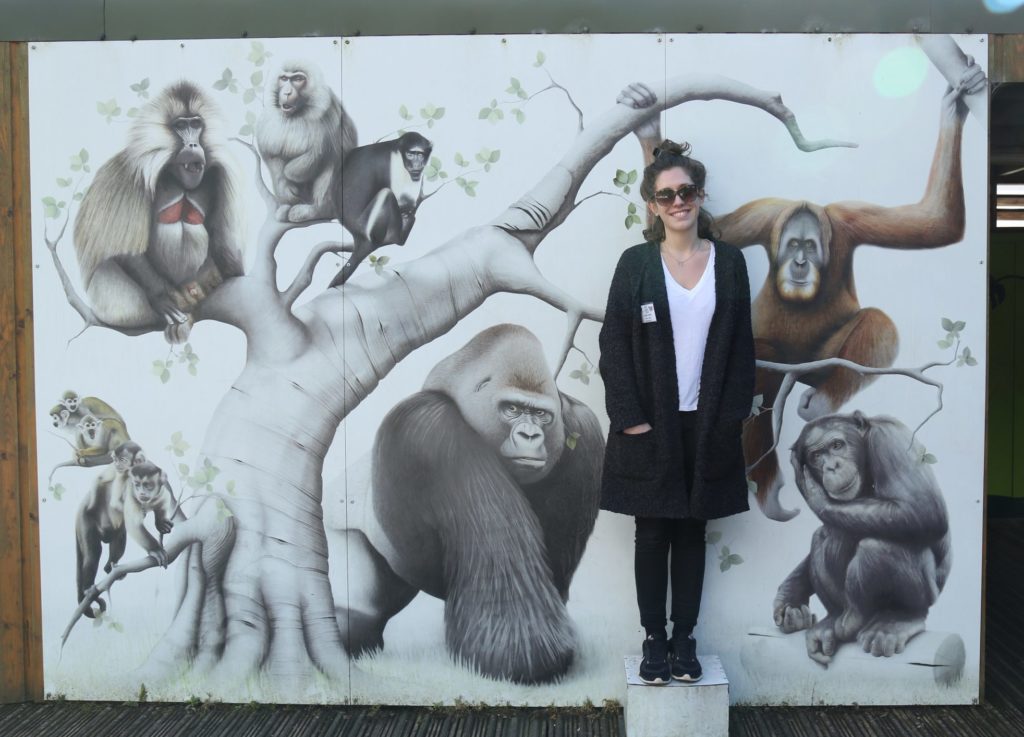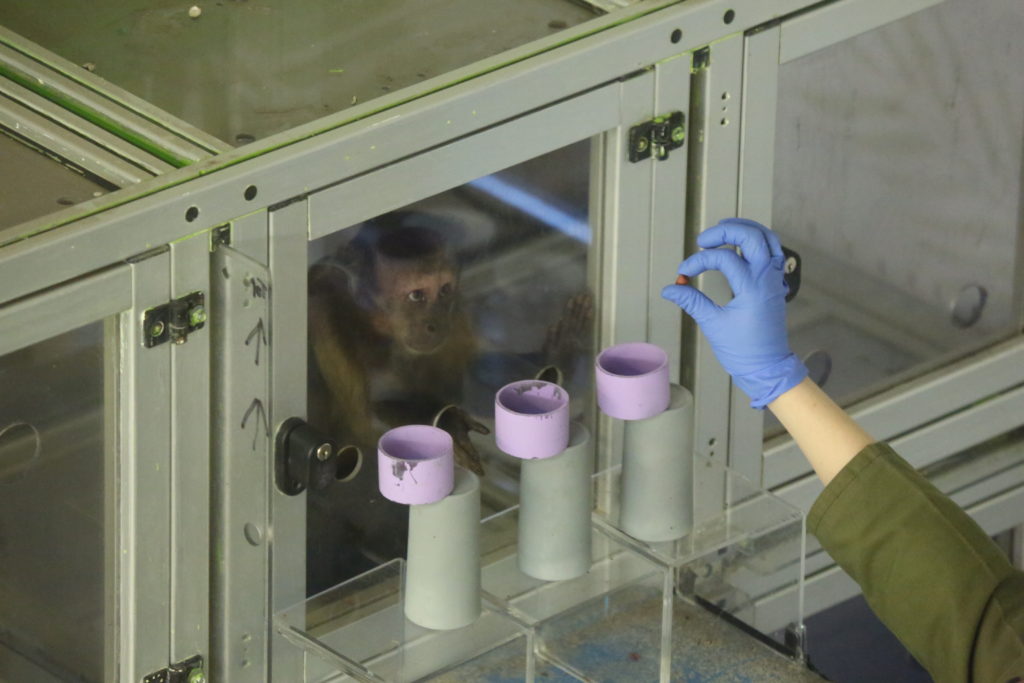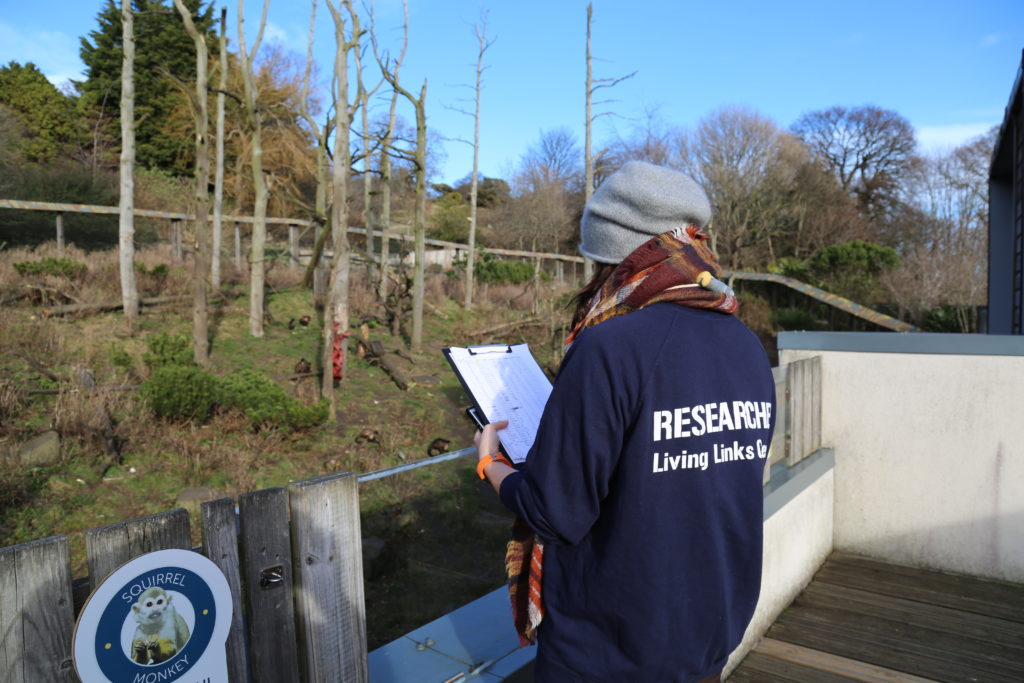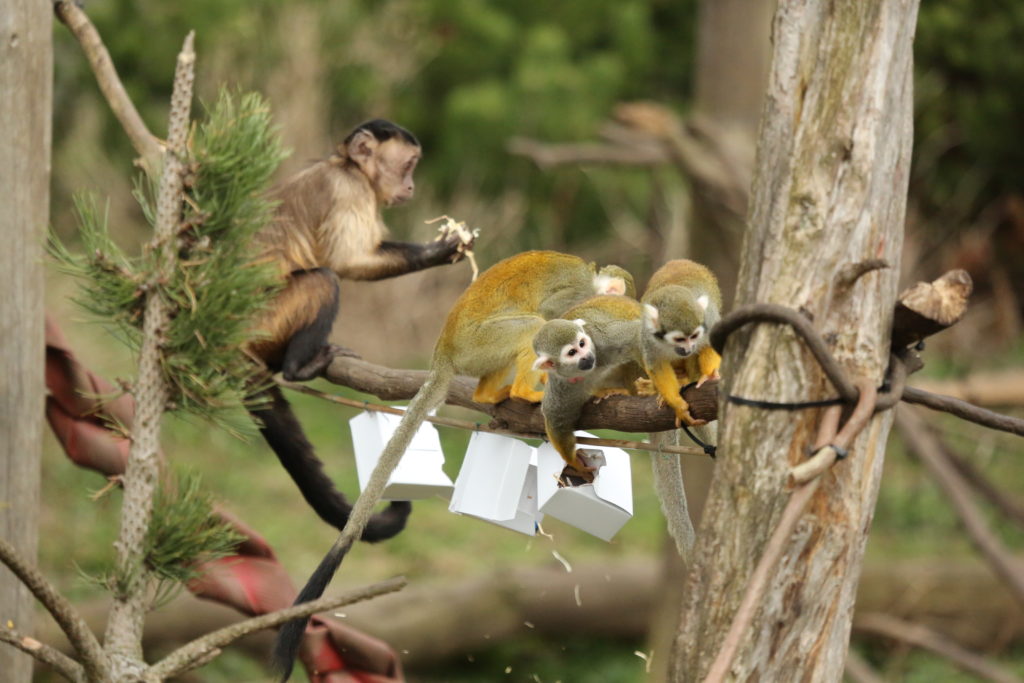
What is Living Links?
The Living Links to Human Evolution Research Centre is a cutting-edge field station and research centre owned and run by the University of St Andrews, in partnership with RZSS Edinburgh Zoo. Opened by Dame Jane Goodall in 2008, Living Links is a mixed species primate exhibit, housing brown capuchin monkeys and common squirrel monkeys, designed specifically for advancing our scientific knowledge on primate cognition, behaviour and welfare and the links with the evolution of human cognition. It welcomes researchers from all over the world, in particular research members of the Scottish Primate Research Group, a collaboration between several renowned Scottish universities. Living Links is also a centre for public engagement with science; all research can be watched and enjoyed by the visiting public and the centre is specially designed to enhance and engage the public’s knowledge in primates and our own evolutionary origins.
Why Study Monkeys?
We humans’ are primates, so monkeys and apes are our closest animal relatives. They are ‘living links’ to the ancestors from which we all evolved. Understanding the origins of the human mind is one of the main reasons we study these animals and a core mission of the research centre; understanding other primate minds is an essential component when attempting to reconstruct how our own cognition may have evolved. Monkeys are fascinating, intelligent and social species, and by studying how they think, interact and communicate with the physical and social world around them, we can gain vital information about their behaviour and cognition. Many of our research experiments are identically carried out with human participants as well as with the monkeys to allow for direct comparisons.

How do we study their behaviour and cognition?
Experimental research takes part in our ‘cubicle’ research rooms. The cubicles are an extension of the monkey’s main enclosure, which consists of a large shared outdoor habitat, and a warm indoor area for each species. The monkeys voluntarily choose to enter the cubicles during research hours to take part in the exciting research games in order to gain tasty treats. They can be temporarily separated off from their groupmates in order to take part in an experiment on their own without distraction but can choose to leave at any time. Understanding behavioural signals for this is an important aspect of our research partnership to ensure the monkeys are always happy to be taking part and do so voluntarily. When they decide to enter the cubicle they are presented with objects such as cups, custom-made apparatus (eg. puzzle boxes) or images on a monitor, and they learn to choose, manipulate, touch or simply watch the stimuli to gain an exciting food reward. Our researchers can then observe and record their behaviour in non-invasive ways using video or computerised recording (via touch-sensitive screens). Living Links was designed to have two groups of mixed species troops, the ‘East’ and ‘West’, which are mirror images of each other in terms of enclosure layout and access to research cubicles. This design naturally provides an opportunity to have one experimental group and one control group when needed.

Alongside experimental research our centre is also a fantastic facility to conduct observational research from our large observational platforms above the enclosures and for longitudinal studies on primate welfare.

What do the monkeys think?
The voluntary nature of the research combined with the fun and interactive apparatus and tasty food rewards naturally lends to the research being a positive and stimulating experience for the monkeys, acting as an additional form of enrichment that promotes positive primate welfare. The monkeys can come and go as they please into the research cubicles and our researchers have to be very patient and wait for when each monkey decides to participate. The monkeys are so used to this now that they are almost lining up to take part! The biggest issue our researchers have is actually waiting for monkeys to leave after they have finished as they often want to do more!

